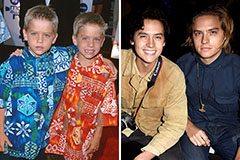Artificial Intelligence encompasses a wide array of technologies aiming to emulate human intellect. Machines, through AI, can process and decide upon visual data, much like how humans rely on sight. The ultimate goal of this technology is to replicate human visual functions in machines, allowing them to acknowledge objects, landscapes, and activities in various videos.
The Role of Big Data and Advanced Computing
Advances in machine learning, particularly with deep learning, has fast-tracked the capabilities of computer vision. CNNs have become the cornerstone of many computer vision technologies, offering unprecedented accuracy in the analysis of images and videos.
Originally, computer vision relied on manually designed features and traditional algorithms but has evolved towards deep learning models which extract features from extensive datasets. This change has led to dramatic enhancements in both performance and reliability.
The development of computer vision is closely tied to the increase in available digital data and improvements in computing power. The availability of vast image and video datasets, combined with powerful GPUs, has allowed for the training of advanced deep learning models, thus opening up new possibilities in computer vision applications.
Diverse Techniques in AI and Computer Vision
The domain includes a variety of techniques, each crafted to address specific issues associated with understanding visual data. These methods ai and computer vision include:
- Semantic Segmentation: A detailed approach for breaking down an image into segments or pixels categorized into specific groups, such as roads, buildings, and cars in urban environments. This granular level of image interpretation is crucial for applications like autonomous driving and land use and land cover (LULC) mapping, helping in environmental monitoring, urban planning, and resource management.
- Instance Segmentation: Going beyond semantic segmentation, this technique categorizes pixels but also distinguishes between individual instances within the same category. This is important in areas like medical imaging, where distinguishing between multiple tumors in an image can influence diagnosis and treatment plans. The requirement to distinguish between instances requires sophisticated algorithms capable of recognizing subtle variations in texture, shape, and context.
- Object Tracking: Employed in video sequences the movement of objects over time, giving insights into their behavior and interactions. Used extensively in surveillance, sports analytics, and autonomous vehicles. For instance, in sports analytics, it can track athletes' movements to improve performance or prevent injuries.
- Image Classification: This process that involves sorting images into predefined classes. This critical step helps determine the primary content of an image, vital for applications like photo organization software and content moderation tools, which depend on accurate identification and filtering of content based on the image's content.
- Object Detection: This technique identifies objects within an image and marks their boundaries. This is indispensable for uses that require a comprehensive understanding of the visual elements within a scene, such as surveillance systems, traffic management, and automated retail systems.
Emerging Trends: Computer Vision and Its Integration with Other AI Technologies
The future of computer vision is deeply intertwined by its integration with other AI domains, such as Natural Language Processing (NLP) and Augmented Reality (AR). This combination promises to develop more intuitive and interactive systems, improving user experiences and heralding innovation.
AI and computer vision are at more info the forefront of technological advancements, reshaping various sectors. By deciphering the visual world, machines can assist, augment, and sometimes even surpass human capabilities read more in specific tasks. At Digica, they leverage cutting-edge computer vision and artificial intelligence technologies to understand and analyze data across varied formats. Their expertise enables them to recognize diverse objects such as people, vehicles, and drones across different spectral ranges, including visible light, thermal, and near-infrared. Additionally, they specialize in processing radar data, using radiofrequency electromagnetic fields to produce images of landscapes and weather conditions and utilize both 2D and 3D imaging techniques. By examining signals from spectrometers and other chemical analysis devices, they deliver comprehensive insights for chemical projects, showcasing their versatile application of computer vision and AI technologies.
 Haley Joel Osment Then & Now!
Haley Joel Osment Then & Now! Jake Lloyd Then & Now!
Jake Lloyd Then & Now! Dylan and Cole Sprouse Then & Now!
Dylan and Cole Sprouse Then & Now! Lark Voorhies Then & Now!
Lark Voorhies Then & Now! Mackenzie Rosman Then & Now!
Mackenzie Rosman Then & Now!